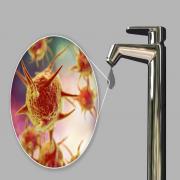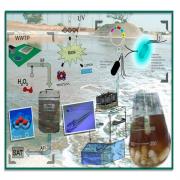Nitrogen Bio-kinetics
In collaboration with Prof. Kartik Chandran, Dept. of Earth and Environmental Engineering, Columbia University, USA
In collaboration with Prof. Kartik Chandran, Dept. of Earth and Environmental Engineering, Columbia University, USA
Tertiary and advanced treatment of wastewater improves water quality, to meet environmental concerns but also as a potential source of water for reuse. Rapid deep-bed filtration of secondary effluent is a tertiary treatment that can effectively remove particles and to some extent organic matter; however ammonia and nitrite are not easily removed. This study examined the feasibility and the performance of a pilot bio-filtration system at filtration velocity of 5-6 m/h, enhanced by addition of hydrogen peroxide (HP), for particle, organic matter, ammonia and nitrite removal. Hydrogen peroxide was used as a bio-specific oxygen source to support oxygen demand for full nitrification. The use of HP is advantageous upon aeration due to solubility limitations of the oxygen. As a result of bio-filtration enhanced by 27 mg/L HP, influent concentrations of 4 mg/L N-NH4+ and 0.65 mg/l N-NO2 were removed during the short hydraulic residence time (HRT). In comparison, filtration without HP addition only removed up to 0.6 mg/L N-NH4+ and almost no N-NO2. DNA metagenome analysis of the media biomass demonstrated a community structure and potential function reflecting significant nitrogen cycle-related species (29% of the total community), with low community diversity dominated by Nitrospira species. It is hypothesized that HP addition increased biofilm growth and thickness and as a result, more anoxic microniches were formed; which enhanced anoxic activity supported by the higher availability of oxidized nitrogen due to intense nitrification.





